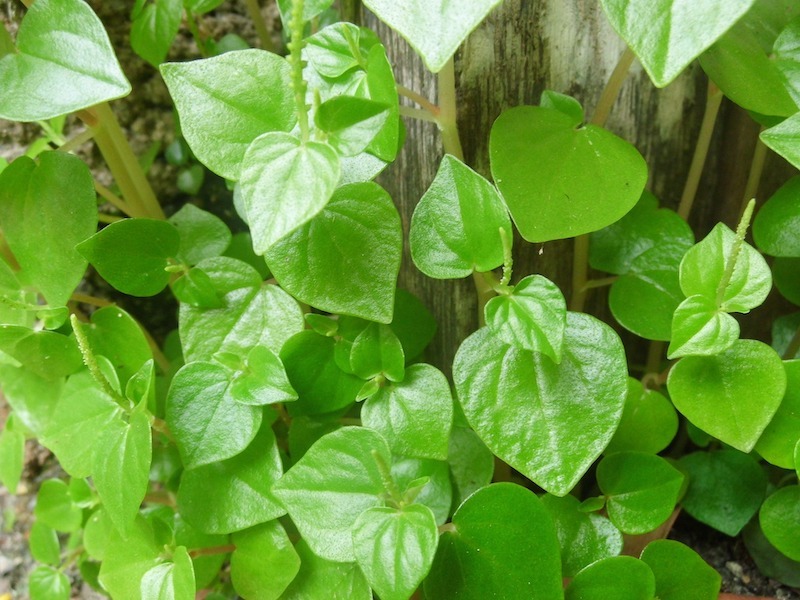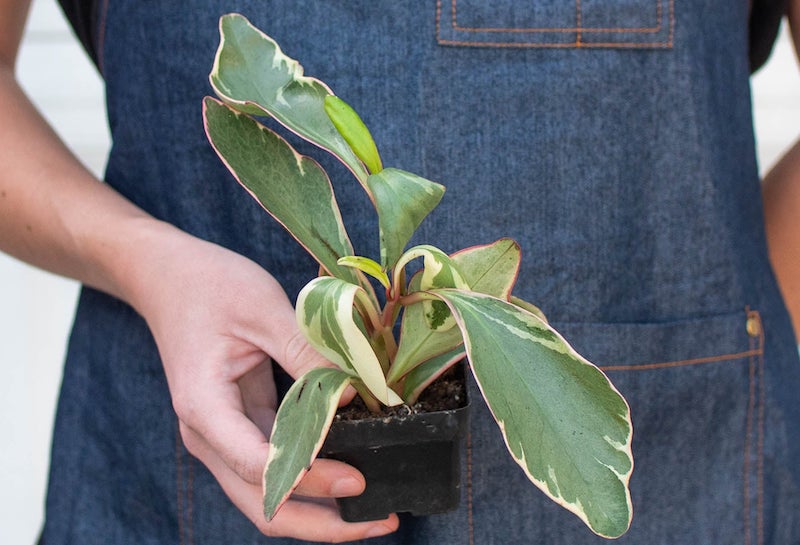Native to various tropical and subtropical regions worldwide, Peperomia adores living outside during the spring, summer, and fall. When afforded increased temperatures, sunlight, and humidity, Peperomia’s usual slow-growth rate will likely increase. During this evergreen’s extended vacation, you will also save time as you delegate a few of your routine gardening duties to Mother Nature.
You will not have to adjust indoor lights and timers to provide Peperomia’s light; the sun will do it. You will not have to dust its succulent-like leaves with a damp cloth; the rain will do it. Putting Peperomia out on your deck or patio to soak up the sun and camp out under the stars will make Peperomia and you exceptionally happy.

When To Put Peperomia Outside
While Peperomia prefers temperatures of 65 to 80 degrees, it can tolerate temperatures as low as 50 degrees. After the last threat of frost has passed, begin transitioning this lovely tropical plant from indoors to outdoors. To acclimate Peperomia, place it outside in a shaded spot on your yard, deck, or patio for about an hour per day and gradually increase the amount of time outdoors. Additionally, slowly adjust its location so that it transitions from shade to partial sun. Transition it slowly over a one-two-week period. However, take caution if temperatures consistently hover around 50 degrees. Observe for signs of cold stress, such as curling, discolored, and wilting leaves. If these symptoms appear, bring Peperomia back inside.
When To Bring Peperomia Indoors
The key to preventing plant shock is avoiding sudden changes to Peperomia's environment. Slowly adjust Peperomia's outside conditions until they sufficiently mimic its new indoor conditions. As outdoor temperatures approach 50 degrees, prepare Peperomia for its move back inside. Over a few weeks, gradually decrease Peperomia's exposure to partial sun until it is exposed to maximum shade. Then, move Peperomia inside, where it will receive bright indirect light. Once inside, Peperomia will flourish when exposed to temperatures between 65 to 80 degrees and humidity between 40 and 50 percent. If moisture is lacking, place Peperomia's pot atop a plate of pebbles and water, or use a humidifier.

An effective transition from outdoors to indoors also requires proper pest management. To avoid introducing unwelcome visitors, including mealybugs, spider mites, and whiteflies, prune off any dead or damaged leaves, and then spray Peperomia with water and treat with insecticidal soap. To ensure there's no threat to any of your other indoor plants, quarantine the Peperomia for two weeks in an isolated location before adding it to the rest of your plant collection.
Caring For Peperomia Outdoors
Low-maintenance, easy-to-care-for, Peperomia adores the outdoors. To help it thrive, provide this tropical perennial a spot that receives partial sun. A porch or partially covered patio/deck is ideal. To prevent heat stress, use terracotta and light-colored concrete containers instead of dark-colored pots and plastic containers; dark colors absorb heat, and plastic traps it. Water Peperomia when its top one inch of soil is dry, and since this evergreen is susceptible to root rot, ensure its pot has unblocked drainage holes. To improve drainage, discourage pest infestation, and protect patio and deck surfaces, choose pots with feet or add feet to containers without them.
Two things that turn Peperomia’s smile into a frown during its outdoor vacation? The elements and pests. In extreme weather such as hail, high wind, and downpours, move the plant to a safer location outdoors, such as a porch, covered patio, shed, garage, or underneath a roof overhang or a spot indoors. If that’s not possible, then cover it with buckets, pots, bowls, or plastic. Remove any covering as soon as the bad weather has passed. Concerning pests such as mealybugs, spider mites, and whiteflies, observe for signs of infestation and treat with insecticidal soap or Neem oil.
 |
Author Suellen Barnes - Published 3-21-2023 |
